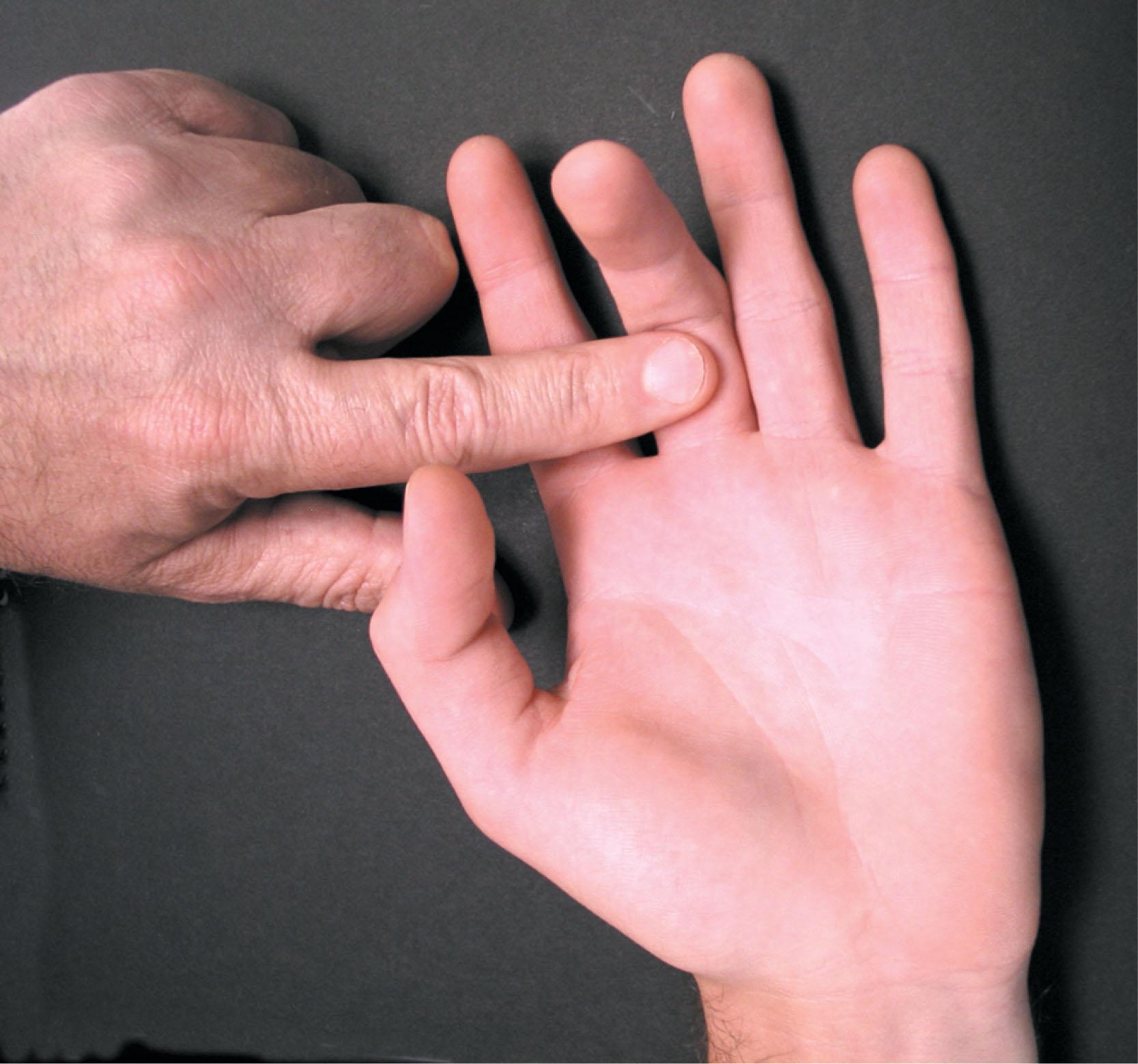Physical Address
304 North Cardinal St.
Dorchester Center, MA 02124
Learn the common causes of trigger finger.
Develop an understanding of the unique anatomy of the flexor apparatus of the finger.
Develop an understanding of the causes of trigger finger.
Develop an understanding of the differential diagnosis of trigger finger.
Learn the clinical presentation of trigger finger.
Learn how to examine the finger and associated tendons.
Learn how to use physical examination to identify trigger finger.
Develop an understanding of the treatment options for trigger finger.

Jimmie “Guitar” Watson is a 27-year-old guitar player with the chief complaint of “the little finger on my left hand keeps locking up when I’m playing my guitar.” Jimmie stated that ever since his band went on tour last fall, the middle finger on his left hand had been locking up. “Doc, the tour was amazing! We were the opening act for the 99½ Blues band. We played an hour set to get the audience warmed up, and then we played backup for 99½. We were playing 7 days a week straight for the entire 14-week tour. It was amazing! About the finger, first it would only lock up at the end of the evening, but as the tour was winding down, the finger would lock up all the time. I figured out some workarounds. I came up with a technique that avoids using the middle finger. I focus on using my thumb, index, and ring finger, with my pinky picking up the slack. Barring chords is off the table for now. I switched from my chunky neck Strat from the mid-60s to a ‘50s reissue that I found in a pawn shop in Little Rock. It has a soft V neck that is a little easier on the hand. Doctor, this finger locking up is really driving me crazy, though. At first it was just once in a while and sometimes it would straighten out on its own. But now once my finger locks, I have to stop strumming and reach up to straighten it out. I am afraid that one of these times it’s going to lock up for good. It hurts a little when I pop it back straight, but it’s the locking that is what I need to get fixed.”
I asked Jimmie about any previous injuries to the left finger, and he said he couldn’t think of any. He had been playing the guitar since he was a kid, and he felt like his fingers had really roughened up until the finger started locking up. “Doc, I make a living playing the guitar. I love playing the guitar. This is really freaking me out! What happens if other fingers start locking up? What am I going to do? Go to medical school?”
I asked Jimmie what made his finger lock, and he said, “Just about any time I flex my left middle finger, it locks up. I try to remember to keep it straight, but sometimes when I’m in the moment, I forget and bend it. When I go to straighten it out, it just stays locked up. Most mornings I wake up with that finger in the locked position.”
On physical examination, Jimmie was afebrile. His respirations were 18, and his pulse was 64 and regular. His blood pressure was 118/70. Jimmie’s head, eyes, ears, nose, throat (HEENT) exam was normal, as was his cardiopulmonary examination. His thyroid was normal, as was his abdominal examination. There was no costovertebral angle (CVA) tenderness. There was no peripheral edema. His low back examination was unremarkable. Visual inspection of the left hand was unremarkable other than some swelling over the flexor tendon of the affected finger, but there was no evidence of infection. The area over the A1 pulley of the left middle finger was tender to palpation. I performed the catching tendon test for trigger finger by having Johnny clench his left hand as tight as he could for 30 seconds and then relax but not open the hand. I then passively extended the affected finger, and I could easily appreciate a locking sensation of the tendon as I slowly tried to actively extend the finger indicating a positive catching tendon sign ( Fig. 13.1 ). With a little increase in pressure to straighten the finger, I felt a pop and the finger straightened.

The right hand examination was normal, as was examination of his other major joints. A careful neurologic examination of the upper and lower extremities revealed there was no evidence of peripheral or entrapment neuropathy, and the deep tendon reflexes were normal. Specifically, there was no evidence of carpal tunnel syndrome, which is common in musicians.
Triggering of the left middle finger began after overuse from prolonged guitar playing
Some pain localized to the area of the A1 pulley of the left middle finger
No other specific traumatic event to the area identified
No fever or chills
Finger is in triggered position frequently on waking
Patient is afebrile
Μiddle finger of the left hand has a triggering phenomenon
Swelling and tenderness to palpation of the area over the A1 pulley area
No evidence of infection
Catching sensation palpated with extension of the affected finger with sudden pop on forced extension
Positive catching tendon test on the left middle finger (see Fig. 13.1 )
Become a Clinical Tree membership for Full access and enjoy Unlimited articles
If you are a member. Log in here